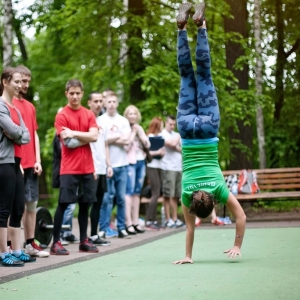Chess is an intellectual sport that develops logic, the ability to quickly think and make decisions. In this game, kings and aristocrats have played a long time ago. This article will be devoted to the topic of chess, its figures and moves on the battle chess field.
Chess board
Chess board consists of 64 fields. At the same time, the first two rows are filled with your figures, and the last two rows are enemy figures. The goal of chess is to put the mat to the enemy. Mat is a situation where the movement of the enemy king is blocked by your figures. Before you understand how different figures in chess go, you need to learn their names. In chess only 6 figures. Consider each separately.

Pawn
The pawn is considered the least significant figure in chess. Despite this, in certain situations, it solves much more than all other figures. It all depends on the location of the figures on the chessboard. Each player has only 8 pawns. They are located in the second row, from each opponent, ahead of the rest of the figures.
- Pawn walks on one or two fields ahead. And go on a pawn immediately into two fields, you can only in the event that this is your first course of this particular pawn. Further movement is possible only on one field.
- Walking back is impossible.
- You can kill an enemy figure with a pawn with one field diagonally.
Any figure of which you killed the enemy figure becomes the place where the last thing was standing.

Horse
It is this figure that many chess lovers start their first figure. Each player has two horses. The horse goes on the "G-shaped principle" in any direction. For example, on two fields ahead and on one left or right. Similarly, the horse can walk in any direction and jump over other figures. Accordingly, the murder of an enemy figure takes place where the horse went.

Elephant
Elephant walks diagonally. Moreover, its moves are limited to the color of the field on which it is worth. Since each opponent has two elephants (one stands on a white field, the second is on black), there is an opportunity to go diagonally both black and white. If the path is free and on the way the figure is not enemy, you can make a move through as many fields as you need. Thus, if the layout of the figures during the game allows, you can go an elephant from one piece of the board to another, strictly diagonally.

Rook
- Again, each player has two trough.
- Rye walks along direct lines, both in horizontal and vertical direction.
- As in the case of an elephant, if the situation allows, you can walk from one side of the board to another.
- Unlike the horse, the rook cannot jump over the figures.

Queen
The queen is considered the strongest figure in chess. Very often, the loss of the queen leads to the defeat.
- Each player for one queens.
- The direction of the moves of this figure combines the directions of the roots of the rook and an elephant, which gives it a huge advantage compared to other figures.
- Queen is unofficially called the Queen. So it is, the queen - the queen of the chess field.

King
All the essence of the game is reduced to this figure. The purpose of each player is to block the movement of the enemy king and protect your own. It was for balancing the game. Early creators of Chess decided to limit the movement of the king. It can walk just only one field, in any direction.

Additional features of Chess
Chess is also interesting because they have an incredibly huge range of actions and combinations that can be used for their approach to victory. Below is a list of these additional actions:
Castling
The essence of the castle in changing the location of the rook and king. There are two types of casting - long and short. Long casting is possible if there are three free fields between the rook and king. To make a long castling, you need to move the long way to three fields in the direction of the king, and the king into two fields in the direction where the rook had recently stood. Short casting is almost the same. The rook moves into two fields, in the direction of the king, and the king into two fields in the direction where the rook was recently stood.
Ability to change the pawn to any shape
Chess rules include such a useful thing as a feeding of a pawn by any other lost figure. This happens when your pawn comes to the very last row of the enemy, i.e. In the opposite end of the board. Having reached this point, you can replace this pawn to the horse, an elephant, a fine or queen (if, of course, you lost them during the game). If there is a choice between these figures, basically choose the queen. And this is understandable.

Chess is a very developing game. It helps maintain an intellectual form. For a child, this sport is especially useful. If you didn't manage to play chess normally - do not despair. Kasparov did not always play like that.
Many scientists suggest that the game of chess causes a positive movement in the brain, contributes to the release of the hormone of joy and balance the psychological state. It can be concluded - chess has no negative sides. As in other sports, it is simply impossible to get a fracture. Think, maybe in your free time it is worth taking it by chess? Moreover, find an opponent is not a problem - the Internet gives such an opportunity.






























